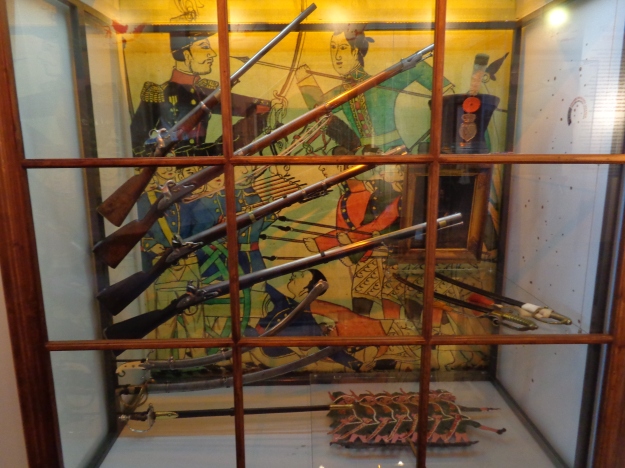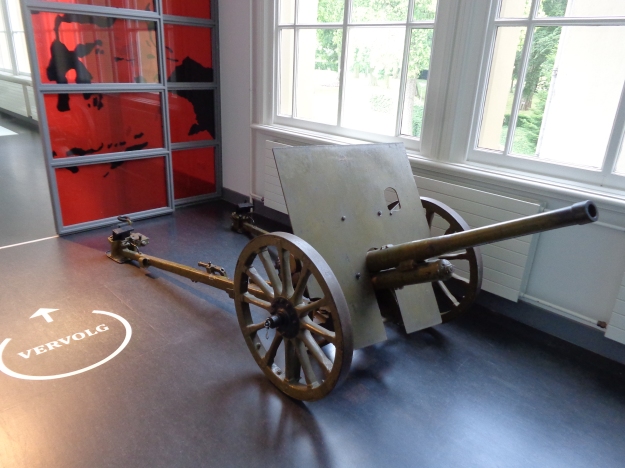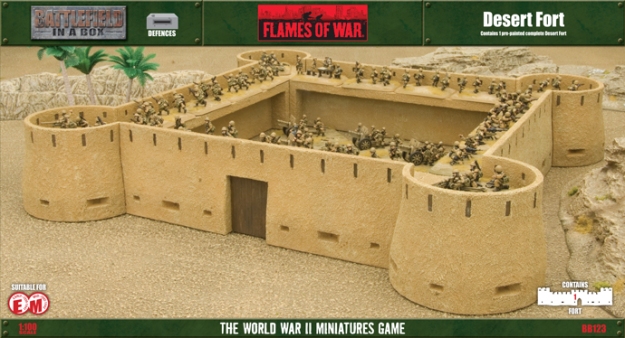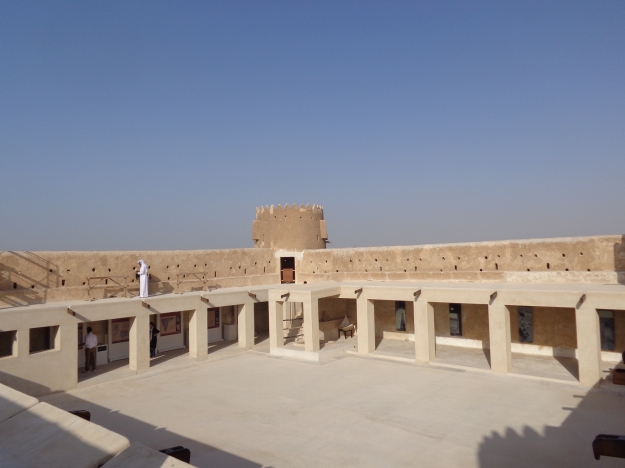I always had a facination with British light infantry in the Napoleonic period. Bernard Cornwell´s Sharpe books and even more so the TV series which I did come across way before the books really sold the idea to me about the novelty of the elite rifle armed infantry man although it has only been later I got a more nuanced view.
Early Experiences
The idea of light infantry was not new to the British army prior to the Napoleonic Wars but it was not as firmly established. Experinces in North America during the Seven Year War demonstrated the need for light infantry especially in the heavily wooded or wild nature that the continent offered. This made recon and skirmishing more important. Light infantry at the time was however often recruited from irregulars or militia, some argued that to become light infantry recruits needed only instructions in simple orders and ability to fire weapons and could be trained much faster than line infantry which much of the training was spent with imbuing the vigourous discipline required for close formation fighting. It was therefore with quite some mistust that light infantry was accepted and after the war most units were disbanded. Similar experiences were gained by the Austro-hungarians using irregulars in Balkan. During the American War of Independence light infantry again proved its worth but this time British commanders resisted claiming that if transferred to European battlefields the light and dispersed formations would simply be overrun by the more numerous cavalry.
Uses of Light Infantry
Infantry formations of the day consisted of heavy infantry and were usually slow and cumbersome formations to move around. To maximise firepower infantry had to be deployed in lines 2-3 deep however to move around the battlefield they needed to deploy into collumns and this could take time. During this time the infantry could be exposed to harassing fire which would wear down morale so to screen them light infantry could be pushed out in front of the line infantry in a loose formation to harass the enemy or protect own troops until they were information.
Other roles of light infantry was to act as scouts when the army was on the move and pickets when encamped to give early warning of enemy movements.
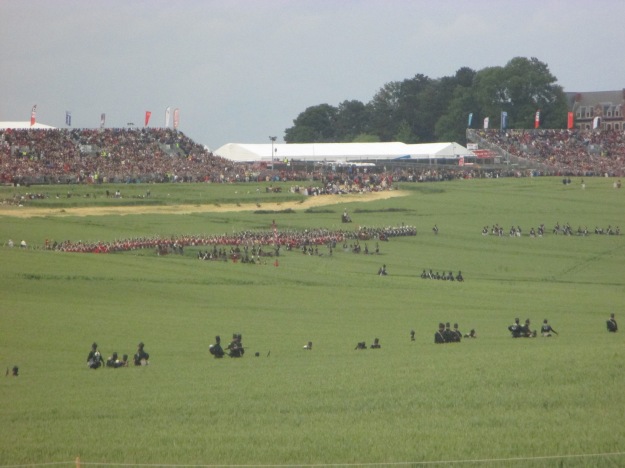
British riflemen in “rifle green” pushed out ahead of the main line of red coats
These roles had previously been held by dragoon regiments in previous centuries where the dragoons fought as dismounted infantry but had horses for scouting and fast redeployment around the battlefield but there had been a drive towards decreasing the number of dragoons as it was a costly unit to maintain in peace time and amalgate dragoon units into heavy shock cavalry while giving infantry regiments and integral scouting/light infantry capability. In 1770 the British army reorganized the battalion to consist of 10 companies of which 1 was named light company and the other grenadier. Often both light and grenadier company were trained in light infantry scouting and skirmishing and this deployed on the wings of the formation hencing giving rise to the name wing companies (and often uniforms had a “wing” on the shoulder either left or right depending on whether light or grenadier). However if part of a larger force light companies were often detached from the main unit to form a detachment of detachments to give the army light infantry capacity if needed but that also means battalions were often without their own light company. Futhermore light company training was often inconsistent and often used as a training unit for new officers hence the officer would move out of the company just has he started to get experience meaning that little of the experience was retained.
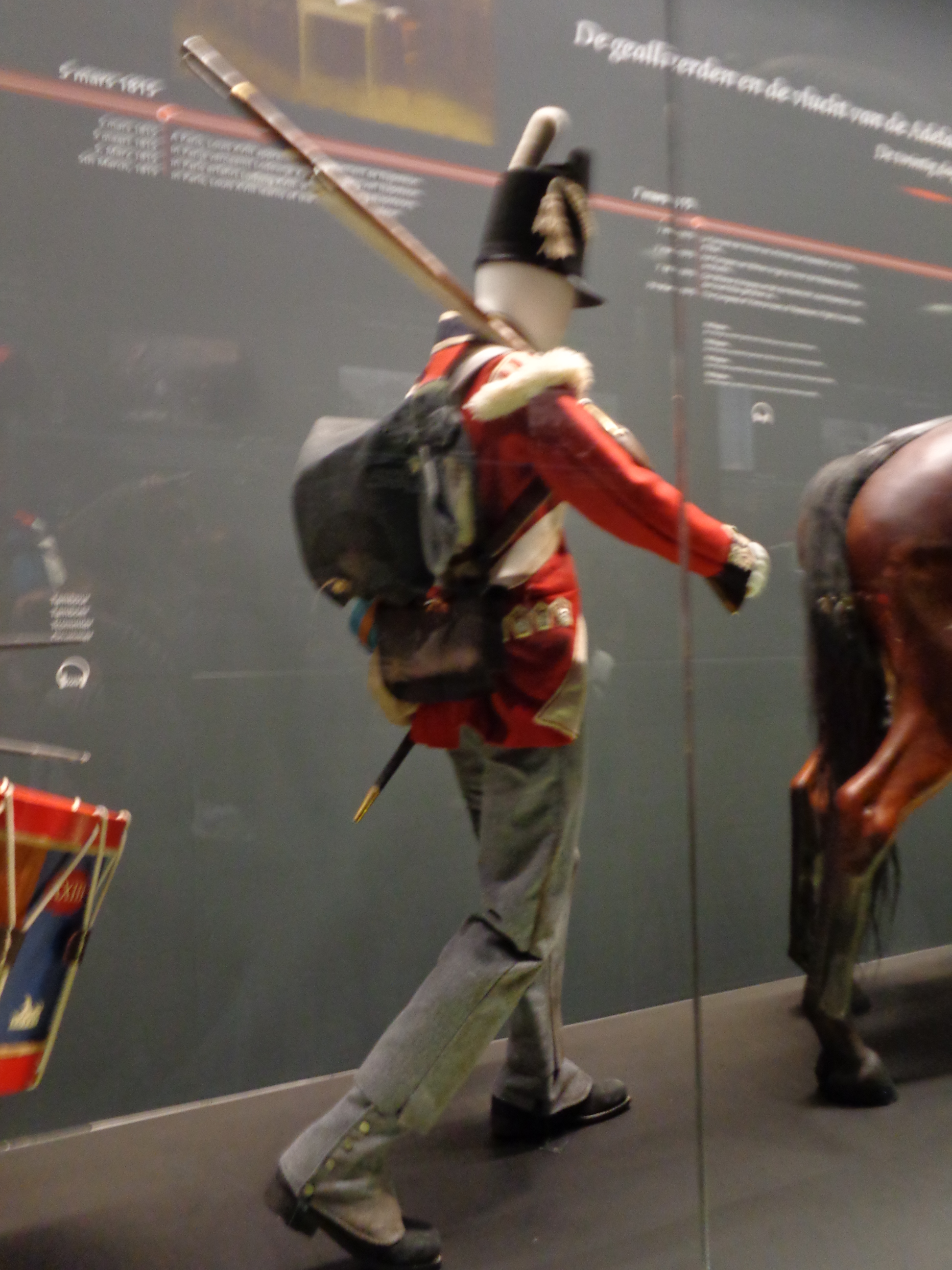
Redcoat from a wing company, note the shoulder wing
British Experiences
Following the American War of Independence there had been a steady decline in light unit experiences and tactics because of afore mentioned reasons and a somewhat ambivalent view towards light infantry as being specialist yet due to their militia origins unsteady in battle. This conservatism led to it being mostly forgotten however in 1795 Britain attempted to intervene in the French revolution which led to an expeditionary force being sent to Fladers where they met the new armies of Revolutionary France. Following the revolution in France much of the former nobility had been removed from the army and the army was largely a conscripted mass army hastily trained. It therefore relied on much different tactics compared to the smaller more highly trained British army. The French army would rely on a much higher proportion of skirmishers or light infantry (up to 25% of the total unit) which would be spread out in front of the unit. This higher number of skirmishers would drive away the enemy skirmishers and then proceed to harass the enemy while the remainder of the French infantry came on in a collumn. If the artillery and skirmishers had already shaken the enemy the collumn would move straight into the attack otherwise it would at the last minute deploy into line covered by the skirmishers to deliver volley fire before going in. Following the defeat of the British army in Flanders revisions had to be made.
The Duke of York
Frederick Augustus, Duke of York, served as a commander in the Flanders campaign and later as the commander-in-chief of the British army and he took many of the lessons in from that campaign. One of the things he wanted to change was the addition of a specialist light infantry unit armed with rifles which would act as a counter to the French light infantry however he met with a lot of resistance in Horse Guards (GHQ) so the had to take a different approach. As the Duke of York he was the honourary commander of the 60th regiment of foot the Royal Americans and went the unit was expanded with a 5th battalion in 1797 he got his way and got them rifle armed as an experiment. It was under the impression that the unit would serve in the Americas and thus this exception was acceptable but in the end it did end up in Europe in the end. What is more interesting is that the unit recruited generally from German origin. The British light troops had shown in the Flanders campaign to be inadequate and thus it was decided to adopt forreign light troops into the army and Hompesch light infantry was consituted as 5/60th. The reason Hompesch came into British service was that it took part in the failed Kosciuszko Uprising, following the defeat it had emigrated to Hanover and thus found itself allied to the British and brought with them valuable insight. This proved very succesful and 2 additional battalions were raised, the way for full units of light troops were cleared.
Other Light Infantry Units
Good experience with rifles let to the formation of the Experimental Rifle Corps in 1800 with volunteers drafted from other regiments in the UK to form a detachment of detachments for trials with rifle and light infantry tactics. This experimental unit proved itself at first Battle fo Copenhagen 1801 and was eventually constituted as the 95th Regiment of Foot (Rifles).
Other work was ongoing by general sir John Moore who was a great proponant of light infantry. Moore volunteered his own 52nd regiment to be retrained as light infantry as he believed that the British army was too small to contain both light and line infantry so to be able to act in both roles. Moore had a radical new vision, instead of viewing soldiers as mechnical instruments of war to march, aim and fire in unison Moore wanted his men to be able to act on initiative and think for themselves. This was radical in a time where people were revolting against the established classes and some conservatists would have loved to shut his project down. But the light infantry concept went on to prove itself.
The Light Division
The light division was created in 1803 by forming the first three battalions together 43rd, 52nd and the 95th rifles all trained as light infantry prior. More regiments would be converted but these were the first.
At the time it was not known as the Light Division but as the Corps of Light Infantry and was camped at Shorncliffe for training. Based on Moore’s vision it was tried to get the light units armed with rifles and set apart by special uniforms to create a strong esprit de corps but only the already rifle armed 95th were allowed to wear green uniforms, the rest had to stay with the scarlet in keeping with the light company traditions. The light division acquitted itself well first at the Siege of Copenhagen in 1807 especially the Battle at Køge and went on to serve in the Peninsula War. Unfortunately not always in a light infantry role, as it was trained to perform both light and line infantry roles, the light division was often used as an elite formation and thrown into the breaches in storming of Ciduad Rodrigo and Badajoz.
Equipment
The Baker Rifle
While some light infantry still used the much cheaper musket and as such was forced much closer to enemy in order to have any chance of hitting (engagements were fought down to maybe 50 meters between skirmishers). However even for light infantry armed with muskets there was a general trend to be equipped with shorter versions on the musket to lighten the infantry man to allow him to move more easily.
It is the Baker Rifle that really set the light infantry apart. By applying rifling the bullet would spin about a quarter turn in the rifled groove in the barrel and thus come out with a spin and be much more accurate and could hit individual targets at up to maybe 200 meters. The problem was that for the bullet to grip the groove it needed to be a tight fit and thus slowed loading significantly. The rate of fire of a Baker Rifle compared to the musket was maybe half meaning that volley fire was much less effective but this was outweighted by accurate and the ability to produce well aimed fire.
A number of techniques were developed for more accurate fire. First of all to avoid confusion men were to always fire around the right side of obstacles. Secondly, the strap on the rifle was often used for steadying when firing, it could be wrapped tightly around the arm and the ramrod could be supported against the belt and used as a mono-pod.
As the muskets were shorter and the Baker rifle was particularly short in a period where reach with bayonets were deemed all important for close engagements, bayonets issued were generally longer to compensate for the shorter weapon. The bayonet issued for the Baker rifle was very long and could be used both as a fighting knife and as a bayonet and resembled a sword thus bayonets in the rifle regiment was affectionally refered to as swords.
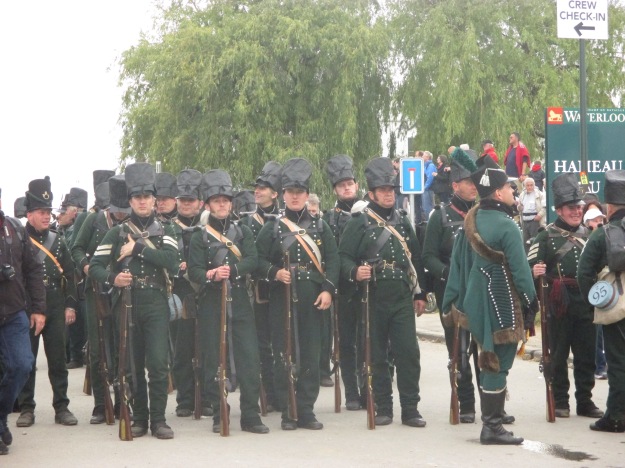
Re-enactors showing off their light infantry equipment
To further lighten the troops and make them excel in the type of light combat uniforms were generally shorter tailed jackets and equipment was of lighter variants. Drums were replaced by bugles as these were easier to carry and orders were more easily relayed over distance. The Bugle therefore became the symbol of light infantry and is to this day carried as cap badges. Because of their ligher nature the faster marching pace was faster 140 paces per minute compared to line infantry 120 paces per minute.
Another interesting feature was that officers to be stylish were some of the early adopters of curved sabres in the British infantry over the straight spadroons.
Basic Tactics
In theory there were two basic formations when skirmishing: “open order” and “extended order”. Both of them deployed in two lines about two paces apart. the distance in the ranks were 2 paces in open and 6 paces in extended but these would vary depending on terrain and natural cover. The idea behind the two lines was to have the men work in pairs. The front rank would fire and then either the rear rank would move through to take up firing positions or the front rank would fall back through the second rank and reload. In this way there was always one of the two loaded at any given time and the two could then in turns cover each other. This required a lot of individual initative and skill and was something that was very sought after in training and which made the light infantry unique.
As skirmishers are naturally stretched out they are vulnerable to sudden attacks by either cavalry or line infantry in more compact formations. Thus a quarter of the troops would be held back in a more compact double line formation50 meters behind the skrimish line to act as a reserve as well an anchoring point for men to fall back and rally on in case they were forced back. When faced with cavalry it could form a small square which the cavalry would find hard to attack while more conventional line infantry could come up from behind for support. It was feared a general retreat by dispersed units easily could turn into a rout if they had no anchoring points.
Another formation that was developed Chain which was a bit of a mixed formation as it had the reserve as usual about 50 meters back but combined two pairs of rifle men to have 1 man forward and 3 in the second line and then the men rotating one at a time to give fire. Each set of three were known as a link in the chain hence the name.



